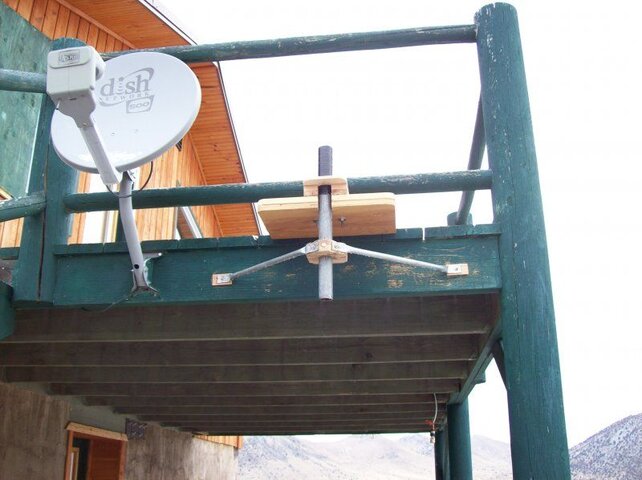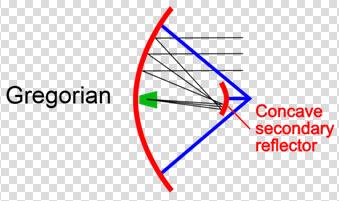I have been working on this WB dish thing and was looking forward to gettin it going. I made a sturdy wooden mount and finally hooked everything up today.I set the elev and skew...I dont have any problem pointing my DISH network unit so I have done it before..I adjusted the Azimuth and got Nothing. Zilch.The signal on the receiver registered around 8 and spiked up occasionally but no real signal and no quality signal.I double checked the cable using my DISH set up and it was ok.THe 2 coax lines run side by side and are RG6.I dont think it was getting any real signal...just ambient energy spikes...at least thats what it seemed like.
I had selected the universal setting for LNB etc ...and Galaxy 19...its in the Mini receiver as you would expect.I tried to get several other birds or at least a sign of them but the same 8 percent and spikes. I hooked up the cheap analog meter to see what it would register but the needle didnt even move.
The pole I rigged up is sturdy and perfectly straight. Better than a store bought one. I expected to get some channels at least. I have a massive open southern exposure.You can see in the pic the 2 Dishes side by side.
If the guy who did the WB thread got some signal in the suburbs ,I cant believe I cant get any here in the high plains.I thought about pulling the reflector off and pointing the Amiko LNB right at the dish..WOuld that be worth trying? I took the LNB off its holder and moved it around in front of the reflector but go no change.A lot of work for nothing so far.


I had selected the universal setting for LNB etc ...and Galaxy 19...its in the Mini receiver as you would expect.I tried to get several other birds or at least a sign of them but the same 8 percent and spikes. I hooked up the cheap analog meter to see what it would register but the needle didnt even move.
The pole I rigged up is sturdy and perfectly straight. Better than a store bought one. I expected to get some channels at least. I have a massive open southern exposure.You can see in the pic the 2 Dishes side by side.
If the guy who did the WB thread got some signal in the suburbs ,I cant believe I cant get any here in the high plains.I thought about pulling the reflector off and pointing the Amiko LNB right at the dish..WOuld that be worth trying? I took the LNB off its holder and moved it around in front of the reflector but go no change.A lot of work for nothing so far.







